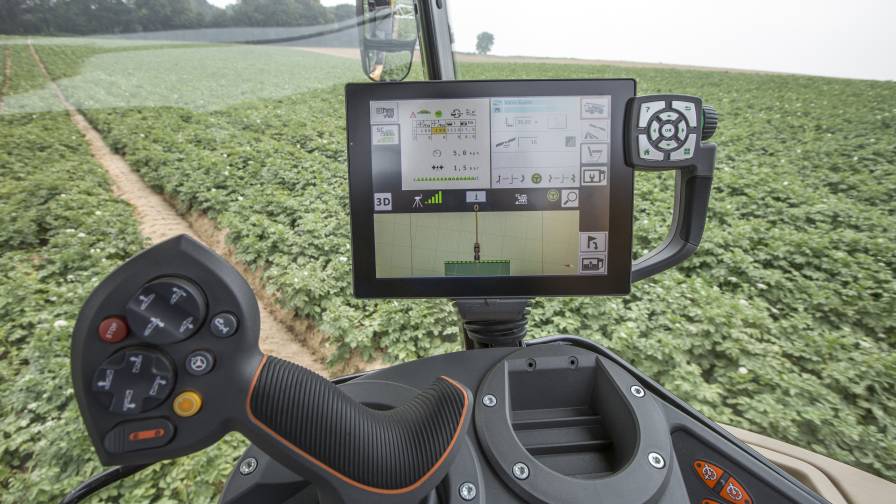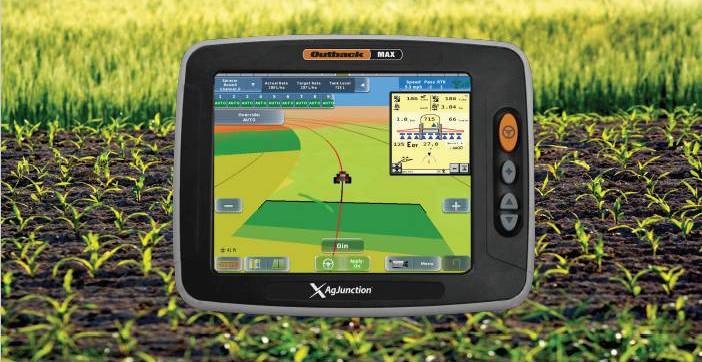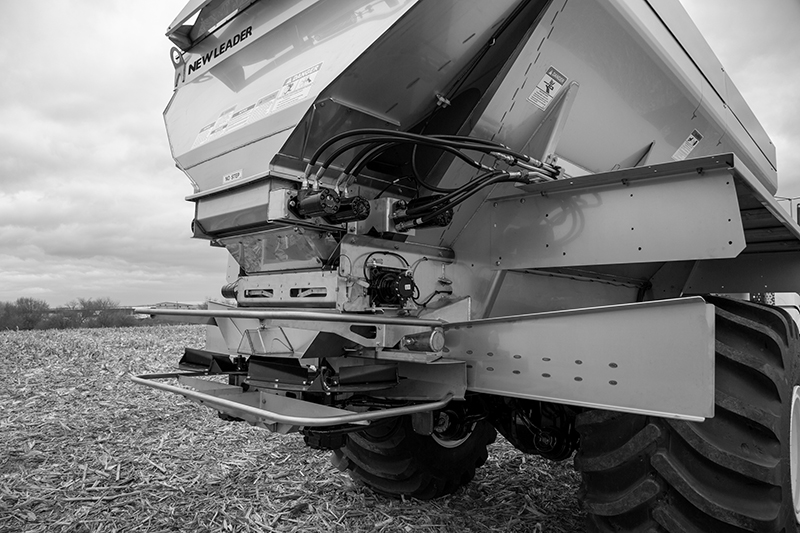Precision Ag Technology: Rate Control For The Times

AGCO says its new AgControl system is simple, intuitive, ISOBUS-compliant and extremely accurate.
It’s not surprising that the need for more economical, effective application is driving the demand for the latest rate controllers these days. Using just the right amount of product needed in just the right place can really help growers’ bottom lines. At Micro-Trak Systems, Jay Beedy, Marketing Manager, says the financial gains for customers can be sizeable — to the point of payback of new equipment in a season, not in years.
Buyers are also looking to get more out of the equipment they already have, notes Alex Lundgren, Product Sales Specialist at Ag Leader. To that end, manufacturers are offering rate controllers with superior product control and advanced features that will work with any brand of UT compatible display. In fact, in general, Lundgren says his company’s primary focus is retrofitting existing equipment which allows applicators to bring used equipment up to current precision ag technology.
Other Drivers
While the economy may be a big factor in growing demand for more precise rates, government regulations are also playing a role. Different measures in various parts of the country — especially around larger bodies of water — require growers to be more careful than ever with applications, points out AGCO’s Cody Light, Strategic Marketing Manager, NA Fuse.
Producers also have to make sure that they have the proper documentation for the work done. “That is drastically driving demand in the market for new controllers and controlling machines that have traditionally not been a precise system,” he says. Today’s controllers help provide reports that can include location, production information, applied totals, field areas, as-applied maps and field boundaries.
The growing use of variable rate application is also impacting the market. “A lot of this is driven by advancements in soil sampling as well as new methods of interpreting soil analysis by zones or regions, which has increased the adoption of variable rate application,” says Wade Stewart, Product Manager for Trimble’s Agriculture Division.
The company has developed the Trimble Universal Variable-Rate protocol (TUVR) so that outside manufacturers of variable rate application equipment can implement into their products to ensure that their devices are totally compatible with Trimble guidance systems. “This is one way we are working with OEM manufacturers to provide simple rate and section control to existing displays,” Stewart explains. “We’re also constantly working to update our ISOBUS system to adapt to OEM manufacturers adopting the ISOBUS standard.”
Increased weed resistance across the country also means it’s more crucial than ever to apply product correctly to ensure the best chemical efficacy, says Ag Leader’s Lundgren. For instance, monitoring droplet size is important to ensure proper plant coverage while also minimizing drift. One example helping here is Ag Leader’s DirectCommand, which provides real-time monitoring of droplet size based on current system pressure with an easy to use interface and color-coded pressure gauge. And realizing customers face even more complex chemical use, Ag Leader has enhanced its Tank Mix functionality, allowing users to set up unlimited mixes with their sub-components at assigned rates.
Proper rate control will be key going forward with the newly launched herbicide systems. Capabilities such as pulse width modulation (PWM) can add to rate control efficacy. PWM sprayer control systems allow growers to dial in a target droplet size from the cab and then maintain that droplet size across a range or application rates and/or ground speeds, explains Tim Stuenkel, Global Marketing Communications Director at TeeJet Technologies, maker of the DynaJet Flex PWM system. “Extremely coarse, drift resistant droplets will be key for successful and responsible dicamba application,” he believes.
Raven also offers this technology. “For some of the new chemistries coming out, we’re working with the EPA to try and get PWM approval on the labels. A lot of work is being done not only by us but other members of the industry,” says Tim Heins, Product Management, Raven Applied Technology.
Direct injection is getting more interest and will be a big help in implementing the new systems, he adds. “It can allow users to put the dicamba type products in a small tank then inject it into the line. They could implement a buffer zone — where you don’t spray a certain type of chemical around the edge of the field — and then start spraying in the middle of the field.”
Additions to the Market
One of the latest advances in rate controller technology is the ability to detect blockage in a system. This capability is just one of the features in the new Raven Rate Control Module, set for release this month. The unit also includes more sensors, more section control, more accurate control and more ISOBUS compatibility. The system has been developed from the ground up, says Heins. “It’s a new platform for us, new software. We took a lot of the existing control algorithms and enhanced them.” There’s also a more simple user interface.
AGCO’s Light thinks customers will be excited about the company’s new AgControl — available across the company’s product lines. Not only is it simple, intuitive, ISOBUS-compliant and fully integrated into AGCO’s machines, it is extremely accurate, he says. “Where rate and section controllers really show their strength is after a field is completed and you see how much you used compared to what you should have used,” he describes. “When those numbers are extremely close, that gives users a great feeling that they did the job the best that they could.”

Topcon’s new Apollo ECU (electronic control unit) for sprayers features multi-line support for up to four lines with automatic “on-the-fly” switching between lines.
This year, Topcon added the Apollo ECU (electronic control unit) for sprayers to its line of rate controllers. The unit offers multi-line support for up to four lines with automatic “on-the-fly” switching between lines. “This allows a wider range of application rates while keeping the desired droplet size of the spray pattern,” says Nathan Watkins, Product Manager.
The unit also offers a user-defined chemical mix system that allows for tracking and application reporting. Plus, a new “recipe wizard” calculates chemical proportions for each tank, removing the need for manual calculations.
Apollo supports 100-plus sections, which is designed to improve the accuracy of the auto section control (ASC) to better match the needs of wide swath widths. The controller can directly drive both two- and three-wire section valves, as well as balanced-section valves provides, so Topcon Apollo system can meet all sprayer configurations with the same hardware, said Watkins.

The Outback Guidance Max Virtual Terminal from AgJunction now does Multi-Product ISO application control.
For 2016, AgJunction enhanced the capabilities of its popular Outback Guidance Max Virtual Terminal — the Outback Max now does Multi-Product ISO application control. Users can now control five separate application channels across a maximum of 50 separate sections. (The Outback AC110 rate controller will continue to be supported as one of the channel inputs.)
“With growers looking to reduce soil compaction, or simply wanting to reduce trips to the field, they’re taking advantage of applying multiple products at once. With the Outback Max Multi-Product application, they now have a seamless user interface to control and monitor the many ISO applications they want to manage,” says Mike Bannister, Director of Product Management for AgJunction.
Controllers are able to do more tasks at TeeJet Technologies. The company’s IC-18 ISOBUS sprayer control now supports variable rate application for both liquid and dry fertilizer.
John Deere Section Control and the GreenStar (GS) Rate Controller multi-product allows users to combine multiple operations on one pass. The versatile controllers can be used in tandem with or independent of each other and moved to different implements as needed.
Developing Segments
Micro-Trak’s Beedy is excited about one new application of the company’s rate control system with an at-plant insecticide. The system is able to dispense and mix a new formulation of Capture — called Capture 3RIVE 3D — in very low amounts. Then this expanding foam formulation expands 50 times in furrow to give a three-dimensional zone of protection.
“Our control system meters and mixes the water and insecticide from two small tanks. No need to mix or measure manually. And with it, a grower can apply up to 500 acres on one fill, significantly improving planting times,” says Beedy.
And while rate controllers have been long used in chemical and dry fertilizer applications, the technology is really taking off for other uses, such as in planters and seeders. Proof of the advances here is DICKEY-john’s new IntelliAg ISO6 controller, winner of a 2016 AE50 award, presented by The American Society of Agricultural and Biological Engineers (ASABE).
The IntelliAg ISO6 is a six-channel, ISOBUS-compatible control and monitor system that allows planters and seeders to apply multiple materials from one module. The ISO6 feature set is highly customizable — to meet the ever-changing needs of precision agriculture.
AGCO’s Light says there is a fairly new market for rate controllers in the manure hauling segment within the livestock market. “Traditionally, these applications have never really been controlled,” he says. “The operator has to manually increase or decrease the speed of the tractor in order to change the rate of the manure coming out. Having a system that can automate that process will make the operators life much easier.”





